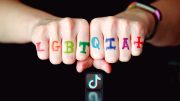“Our nation’s inability to effectively address HIV infections among Black gay men . . . is one of the greatest failures of the U.S. HIV/AIDS response,” according to health policy analysts from The Foundation for AIDS Research (amfAR). Writing in HIV and the Black Community: Do #Black(GAY)Lives Matter?, the amfAR analysts note that while HIV infections have decreased among members of the Black community vulnerable to HIV (Black women; babies; and injection drug users), they continue to increase among Black gay and bisexual men. In fact, Black gay men currently account for more than half (53%) of all new HIV infections among Black Americans each year. The analysts conclude: “As HIV among both Black Americans and gay men becomes increasingly concentrated among Black gay men, we must move beyond talk and engage in concrete action to turn things around.”
Multiple research studies have shown that, while Black gay men have substantially higher rates of new HIV infections than other gay men, this disproportionate HIV incidence cannot be explained by differences in risk behaviors. Instead, the high HIV incidence arises from the fact that so many Black gay men―nearly one in three―are already infected with the virus. “A greater number of people with HIV (particularly in communities with less access to health care or prevention) increases the chances of HIV transmission,” according to the amfAR brief. “This explains why Black gay men remain at elevated risk for HIV despite having fewer sexual partners than White gay men.” [pullquote]“A greater number of people with HIV (particularly in communities with less access to health care or prevention) increases the chances of HIV transmission,” according to the amfAR brief. “This explains why Black gay men remain at elevated risk for HIV despite having fewer sexual partners than White gay men.”[/pullquote]
Several other factors also contribute to high HIV incidence among Black gay men, according to the report. These include a history of neglect by institutions and communities, underfunding and lack of resources, lack of social support, higher rates of homelessness, and less access to healthcare than many other groups. The amfAR analysts recommend five fundamental steps to address HIV health disparities affecting Black gay men:
- Provide equitable funding and resources for HIV programs focusing on Black gay men;
- Invest in data and long-term monitoring of the lives and experiences of Black gay men;
- Encourage Black families to communicate more effectively with and about their Black gay sons;
- Create more pathways and models of success for Black gay men to lead long, happy, and fulfilling lives; and
- Fight against HIV and not against each other.
The report concludes that the U.S. HIV/AIDS epidemic cannot be addressed effectively without reducing new HIV infections among African Americans or gay men. “Without more cooperation between both communities and Americans as a whole, we will only add decades to a crisis that could and should have ended much earlier. Let’s elevate the conversation, stick to the facts and the data, and ultimately make National Black HIV/AIDS Awareness Day a part of our past rather than a permanent fixture in our future.”
AIDS United will host a four-part Google Hangout series in order to develop strategies to deal with the impact of HIV among Black gay and bisexual men. Titled “We Shall Not Be Removed: The State of HIV/AIDS Among Black Gay and Bisexual Men,” the series will “bring together experts, visionaries, and thought leaders from across the LGBT and HIV communities to discuss the impact of HIV on gay and bisexual Black men, parallel social justice movements, and strategies to alleviate the epidemic,” according to AIDS United. In the first session in the series, held on February 3, panelists Yolo Akili, Kenyon Farrow, Aquarius Gilmer, and Charles Stephens commemorated the birth and legacy of Black gay filmmaker Marlon Riggs. To learn more about the series and to see a video of the February 3 panel discussion, please click here.
Association of American Medical Colleges Addresses LGBT Health Care and Health Equity
The Association of American Medical Colleges (AAMC) recently published a report addressing LGBT health equity. Implementing Curricular and Institutional Climate Changes to Improve Health Care for Individuals Who Are LGBT, Gender Nonconforming, or Born with DSD, is a 306-page resource for medical educators. The publication provides medical schools, teaching hospitals, and health systems with “a roadmap for improving the care of LGBT and other individuals with differences in gender identity, gender expression, and sex development,” according to AAMC president and CEO Darrell Kirch.
Jennifer Potter, MD, a co-author of the AAMC publication who directs women’s health programs at Beth Israel Deaconess Medical Center and Fenway Health, recently wrote an oped for WBUR’s Cognoscenti about the need for the guidelines: “[I]t is hard for doctors to believe that they may not provide the same quality of care to all of their patients. And in medical schools, the notion persists that if students are taught to relate to a generic patient in an open way, then they should be able to take good care of anyone. … [But] even as health care providers, we tend to do more for those with whom we feel more comfortable . And we do not even realize when we’re doing it.”
March 10 Is National Women and Girls HIV/AIDS Awareness Day
Tuesday, March 10, will mark the 10th observance of National Women and Girls HIV/AIDS Awareness Day (NWGHAAD). Like last year, the theme of 2015 NWGHAAD is: “Share Knowledge. Take Action.” According to the HHS Office of Women’s Health, which is the lead agency for the event, this awareness day is an opportunity for federal, national, and community organization to come together “to offer support and hope, reduce stigma, share information, and empower women and girls to learn the importance of HIV/AIDS prevention, care, and treatment.” In commemoration of this day, we have compiled an annotated list of online resources focusing on HIV/AIDS among women and girls in the U.S.
Fact Sheets and Reports
Women and HIV/AIDS in the United States. This four-page fact sheet from the Kaiser Family Foundation provides excellent summary information on the impact of HIV/AIDS on U.S. women. The fact sheet includes: a snapshot of the epidemic, a review of key trends and current cases, information on reproductive health and HIV transmission specific to women, HIV testing, access to prevention and care, and women’s opinions about HIV/AIDS.
HIV Among Women. This two-page CDC fact sheet presents information about trends in HIV/AIDS diagnoses and deaths among women, prevention challenges, and steps CDC is taking to address the needs of women affected by HIV/AIDS.
Women and HIV. This is a one-page fact sheet from the AIDS InfoNet. Also available in Spanish and Russian.
HIV among Pregnant Women, Infants, and Children in the United States. This is a CDC fact sheet
Special Issues for Women. This is an educational lesson on the AIDSmeds website focusing on health issues of particular concern for HIV-infected women. Also available in Spanish.
Diagnoses of HIV Infection and AIDS in the United States and Dependent Areas, 2012. This 83-page CDC report includes detailed information about HIV and AIDS cases and deaths among Americans, including breakdowns by gender, race/ethnicity, transmission category, and age.
Women and HIV/AIDS. This is a global overview of HIV/AIDS among women from Avert.org. Topics covered include: updates on HIV/AIDS among women in different geographical regions; women’s responsibilities for HIV care in affected families; specific effects of the epidemic on women and children; and challenges that can make it difficult for women to protect themselves from infection. This document also includes citations and hyperlinks to more than 60 source research papers and reports.
*Eric Brus is the Director of Health Information at AIDS Action Committee. This report is produced by the Health Library of the AIDS Action Committee in collaboration with the New England AIDS Education and Training Center Minority AIDS Initiative Project. The full version is available online.








